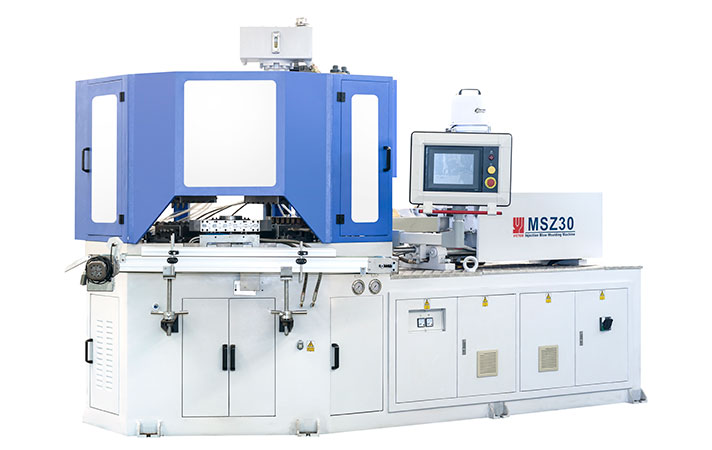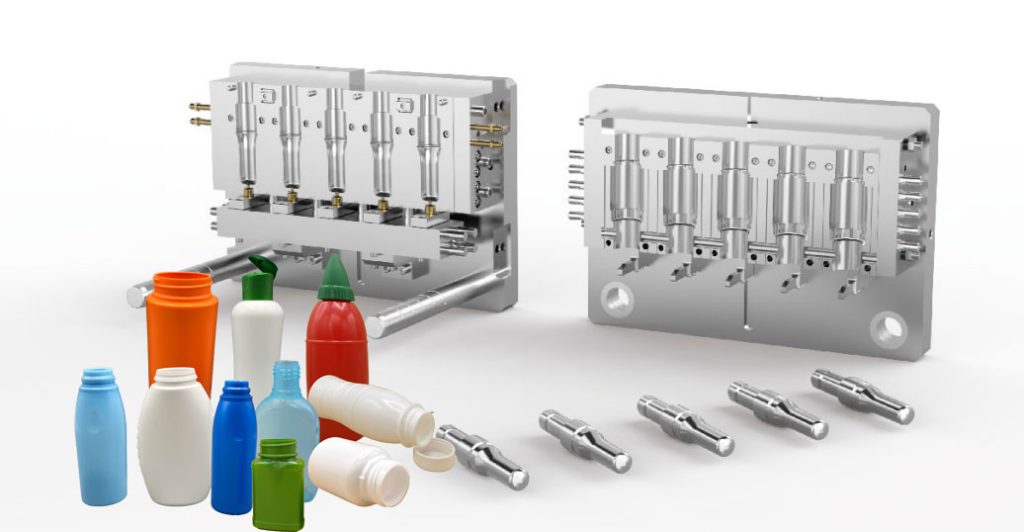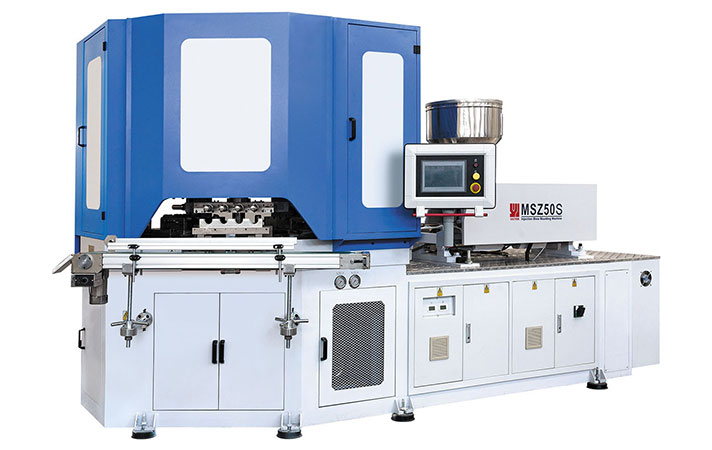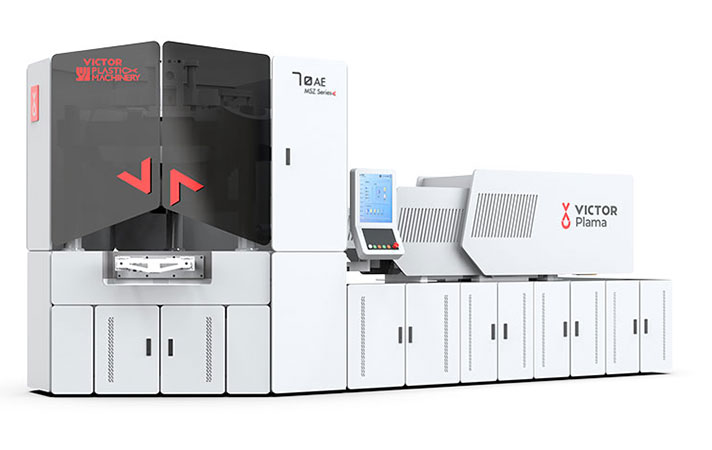Injection Blow Molding (IBM) Technology – Process, Applications & Advantages
Injection Blow Molding (IBM) is a high-precision molding technology used to produce pharmaceutical, cosmetic, and food-grade plastic bottles with excellent consistency and surface quality. This page explains how the IBM process works, its applications, and why the technology is ideal for small-to-medium bottle production that requires clean neck finishes and flash-free results.
How the Injection Blow Molding (IBM) Process Works
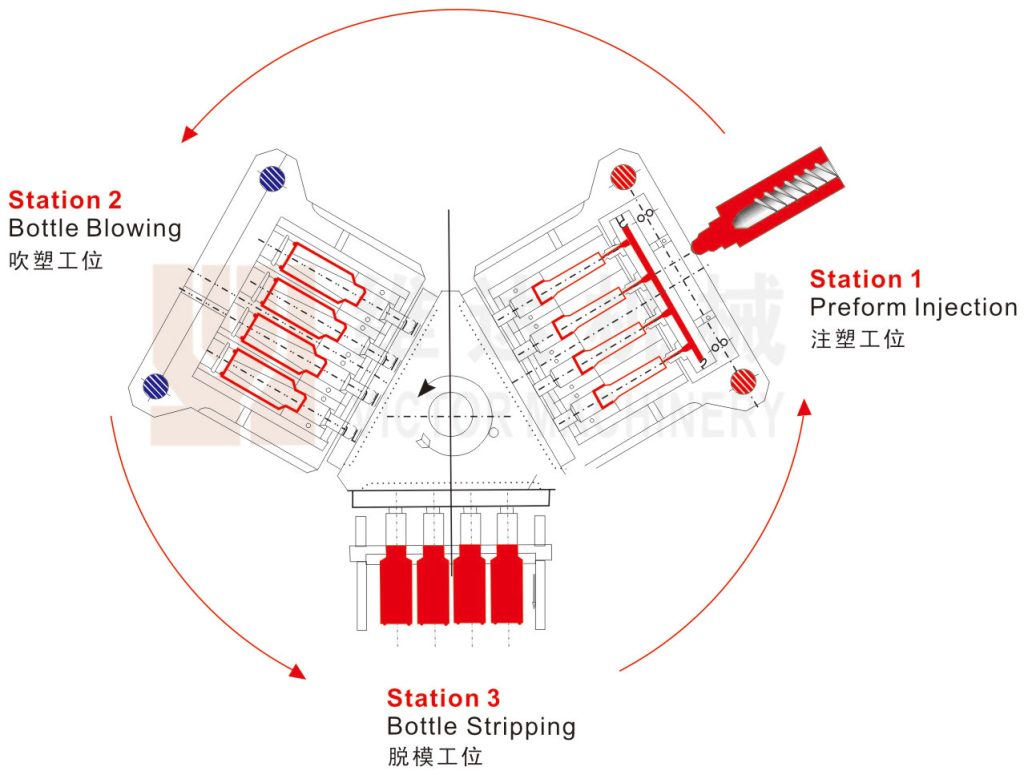
The Injection Blow Molding (IBM) process is built around a clean and highly efficient three-station rotary system. Each station performs a dedicated step—Injection, Blowing, and Ejection—to ensure stable production and high-precision bottle quality.
Key Advantages of the IBM Process
- Stable wall distribution for uniform bottle strength
- Accurate neck and thread dimensions with zero flash
- Fully enclosed molding process suitable for clean-room environments
- High repeatability for pharmaceutical and cosmetic bottle production
- Ideal for small-to-medium bottles requiring precision and hygiene
Our IBM systems are engineered for High-Precision Bottles
IBM technology is widely recognized for its ability to produce flash-free, uniform, and contamination-free bottles with high dimensional accuracy. Its stability and repeatability make it ideal for applications that require clean-room performance and consistent product quality.
-
Ultra-Clean Neck Finish
Achieves precise neck dimensions with zero flash, ideal for pharmaceutical and cosmetic bottles.
-
Highly Uniform Wall Thickness
Three-station rotary process ensures stable material distribution for consistent product strength.
-
Wide Material Compatibility
Supports HDPE, PP, PETG, LDPE, and other resins used in medical, cosmetic, and food packaging.
-
Process Stability & Repeatability
Servo-controlled mold movements ensure consistent cycle times and dependable quality.
-
Low Waste & High Efficiency
No trimming, no secondary processing, and near-zero material waste during production.
IBM vs EBM vs ISBM — Comparison of Molding Technologies
| Process | Typical Range | Strengths | Notes |
|---|---|---|---|
| IBM (Injection Blow) | 2 ml – 2 L | Highest neck precision, flash-free finish, uniform wall thickness, excellent repeatability | Best for pharmaceutical, cosmetic, and food packaging that requires clean-room production |
| EBM (Extrusion Blow) | 50 ml – 5 L+ | Suitable for large containers, handleware, wide-mouth options; flexible with HDPE and PP | Lower neck accuracy vs. IBM; more material waste due to trimming |
| ISBM (Injection Stretch Blow) | Small–medium PET | High clarity PET bottles, excellent transparency, strong barrier properties | Ideal for beverage and water bottles; requires stretch-orientable PET |
Applications of the Injection Blow Molding (IBM) Process
Key Features of the IBM Molding Process
- ✔️ High-precision multi-cavity mold design ensures uniform bottle necks
- ✔️ Optimized cooling channels provide stable cycle time and consistent wall thickness
- ✔️ Hardened steel core rods ensure excellent dimensional accuracy
- ✔️ Quick mold-change capability supports a wide range of bottle designs
- ✔️ Compatible with HDPE, PP, PETG and other IBM-process resins
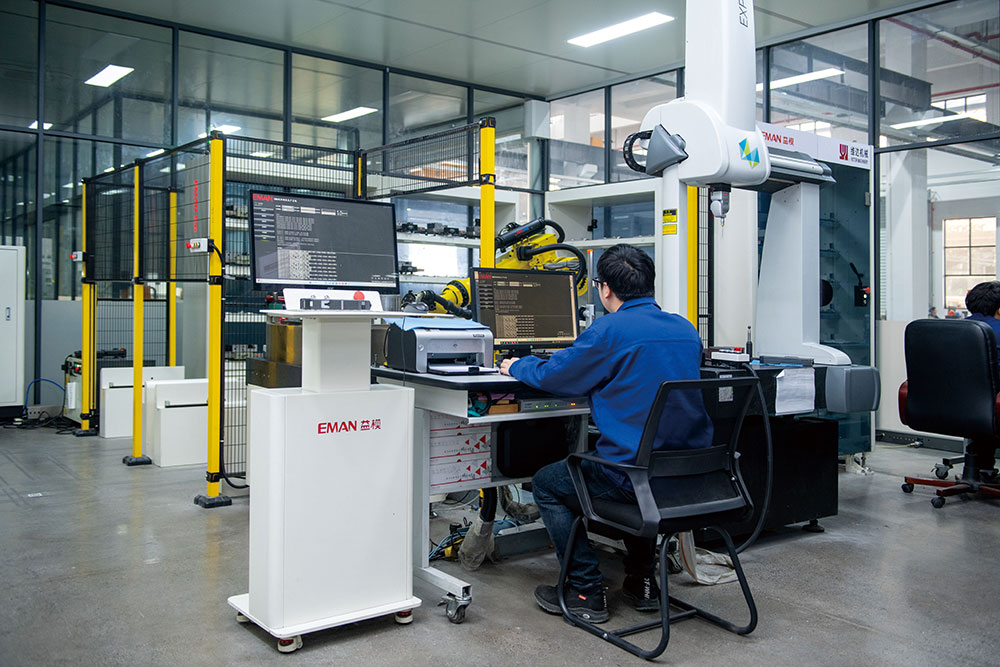
With decades of experience in Injection Blow Molding technology, Victor Machinery provides complete IBM solutions that integrate tooling design, process engineering, and project implementation:
- Customized IBM process development
- High-precision mold design and fabrication
- On-site commissioning and operator training
- Reliable global technical support

